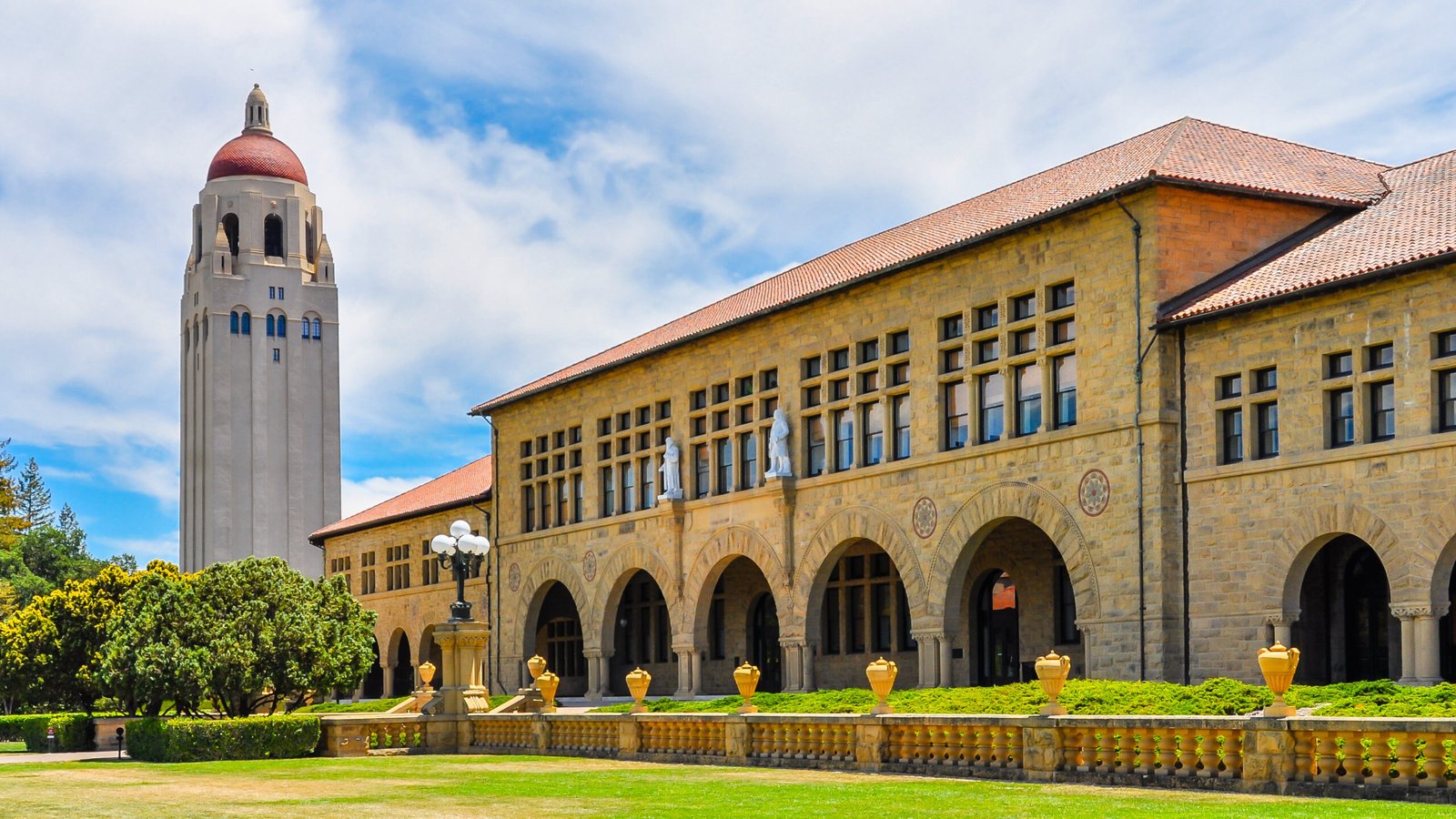Stanford University
Summary
Stanford University opened its doors in 1885 and sits in California’s Bay Area, roughly 30 miles south of San Francisco. Over half of the students here are pursuing graduate studies. The university is made up of seven schools, many of which are top-ranked for advanced degrees. Three of these schools offer both undergraduate and graduate programs: humanities and sciences, earth sciences, and engineering. Meanwhile, the business, law, education, and medical schools focus solely on graduate-level education. Stanford follows a quarter-based academic calendar, and all classes are taught in English.
About 8% of undergrads and 30% of grad students come from outside the U.S. Undergrads who start as freshmen get guaranteed housing for four years, with over 90% choosing to live on campus. First-year grad students also have housing secured for them. More than 60% of graduate students and around 30% of faculty call campus home. Stanford’s massive library system includes 20 libraries holding over 9.3 million physical books. Research funding here has surpassed $1 billion, including federal support for projects at the SLAC National Accelerator Laboratory—a U.S. Department of Energy facility run by Stanford. Every year, roughly 3,400 scientists from around the world use SLAC’s resources, and the lab produces over 1,000 research-based scientific papers annually.
University Data
- Total number of students: 14,517
- Number of international students: 3,326
- Total number of academic staff: 2,268
- Number of international staff: 792
- Number of undergraduate degrees awarded: 1,512
- Number of master’s degrees awarded: 2,205
- Number of doctoral degrees awarded: 1,105
- Number of research-only staff: 3,391
- Number of new undergraduate students: 1,606
- Number of new master’s students: 1,294
- Number of new doctoral students: 1,012
Rankings
Stanford University holds the #3 spot in Best Global Universities, with rankings based on widely recognized indicators of excellence.
Global Universities Rankings
- #3 in Best Global Universities
Subject Rankings
- #38 in Artificial Intelligence
- #9 in Arts and Humanities
- #3 in Biology and Biochemistry
- #3 in Biotechnology and Applied Microbiology
- #12 in Cardiac and Cardiovascular Systems
- #3 in Cell Biology
- #91 in Chemical Engineering (tie)
- #4 in Chemistry
- #155 in Civil Engineering
- #5 in Clinical Medicine
- #6 in Computer Science (tie)
- #21 in Condensed Matter Physics
- #24 in Ecology
- #4 in Economics and Business
- #16 in Education and Educational Research
- #66 in Electrical and Electronic Engineering
- #5 in Endocrinology and Metabolism
- #11 in Energy and Fuels
- #14 in Engineering (tie)
- #181 in Environmental Engineering
- #3 in Environment/Ecology
- #34 in Gastroenterology and Hepatology (tie)
- #29 in Geosciences
- #115 in Green and Sustainable Science and Technology
- #3 in Immunology
- #11 in Infectious Diseases
- #53 in Marine and Freshwater Biology
- #5 in Materials Science
- #1 in Mathematics
- #135 in Mechanical Engineering
- #37 in Meteorology and Atmospheric Sciences
- #24 in Microbiology (tie)
- #3 in Molecular Biology and Genetics
- #22 in Nanoscience and Nanotechnology
- #4 in Neuroscience and Behavior
- #15 in Oncology
- #1 in Optics
- #10 in Pharmacology and Toxicology
- #14 in Physical Chemistry
- #4 in Physics
- #40 in Plant and Animal Science (tie)
- #4 in Psychiatry/Psychology
- #8 in Public, Environmental and Occupational Health
- #2 in Radiology, Nuclear Medicine and Medical Imaging
- #5 in Social Sciences and Public Health (tie)
- #16 in Space Science
- #6 in Surgery
- #75 in Water Resources
2024-2025 Indicator Rankings
Stanford’s #3 Best Global Universities ranking is based on 13 performance indicators. Here’s how it stacks up in each category:
- Global score: 94.5
- Global research reputation: #3
- Regional research reputation: #2
- Publications: #15
- Books: #14
- Conferences: #21
- Normalized citation impact: #24
- Total citations: #6
- Number of publications among the top 10% most cited: #4
- Percentage of total publications in the top 10% most cited: #9
- International collaboration (relative to country): #277
- International collaboration: #933
- Number of highly cited papers in the top 1% most cited: #2
- Percentage of highly cited papers in the top 1% most cited: #18

